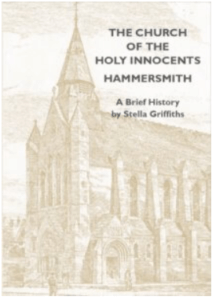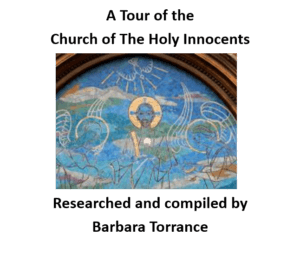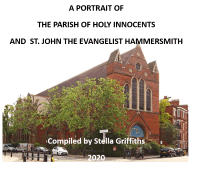History of the Church
In Victorian times attending church was very much part of family life and church buildings were large to accommodate the increasing population. The parish church of St John the Evangelist, Glenthorne Road, was consecrated on 27th July 1859. In 1871 the parish numbered 7000 inhabitants but by 1890 this had increased to 20,000, far too many for even such a large church building.
In 1876 the Revd W Allen Whitworth, then Vicar of St John’s, built a mission room in Dalling Road, which was mainly to be used for children’s services. It was designed to serve for 10 years when it would be necessary to form a separate district and replace the temporary building with a permanent church, that of the Holy innocents’.
The Revd Henry Cullen Eden, brother of the Bishop Suffragan of Dover, became the priest there in 1885, and began the task of raising funds to build the new church. The laying of the foundation stone by the Duchess of Westminster took place on Saturday, July 20th 1889.
The first part of the building was opened for services on September 25th 1890, and consecrated on March 7th 1891 by the Bishop of London, Dr Temple, later to be Archbishop of Canterbury. The west wing was completed in 1903 and was dedicated by the Bishop of Kensington.
The church was designed by Mr James Brooks of Wellington Street, a distinguished architect of the Catholic Revival. Early English in style, it could accommodate 1200 people. Holy Innocents’ was described as “a fine example of simple and solid work, providing its effect by massive construction and picturesque outlining and grouping, without any adventitious aid from decorative detail”.
This is an excerpt from ‘The Church of The Holy Innocents; A Brief History’ written by our Archivist, Stella Griffiths. Available to buy for £5 from the Parish Office and after services. Contact administrator@hisj.co.uk. Click on the images below to download the text.


